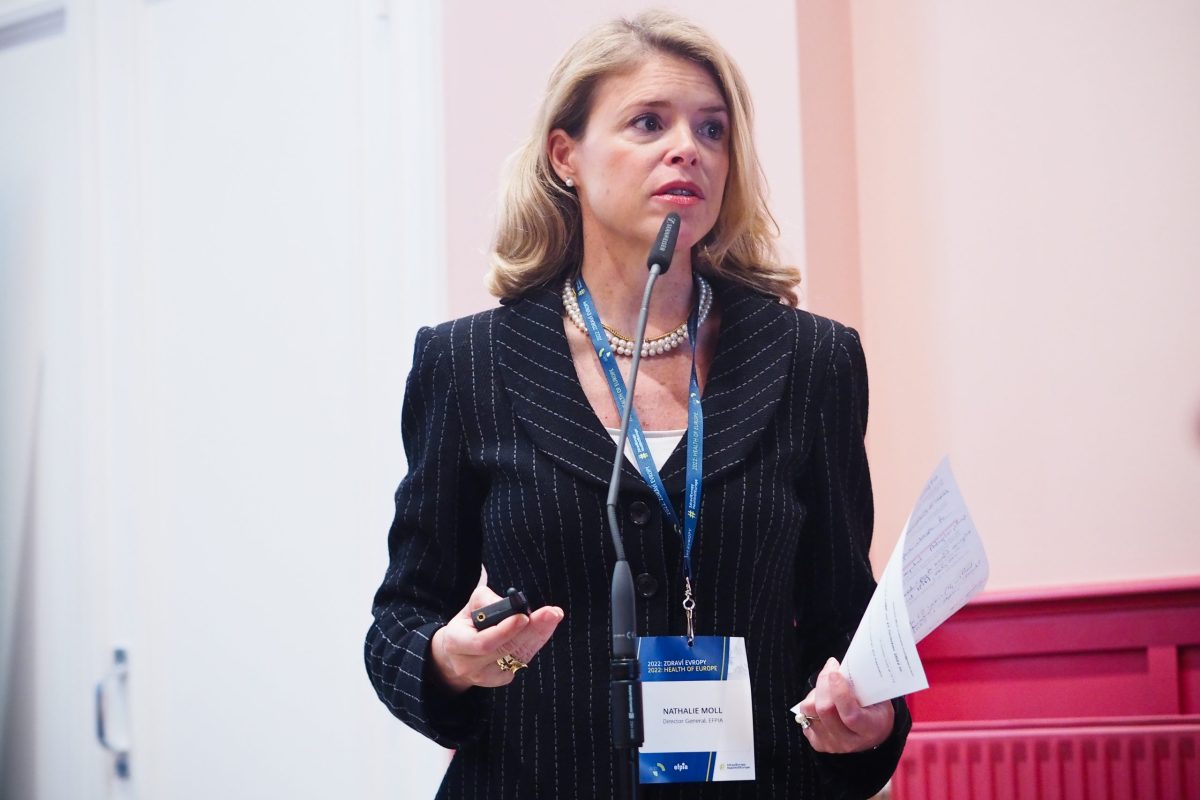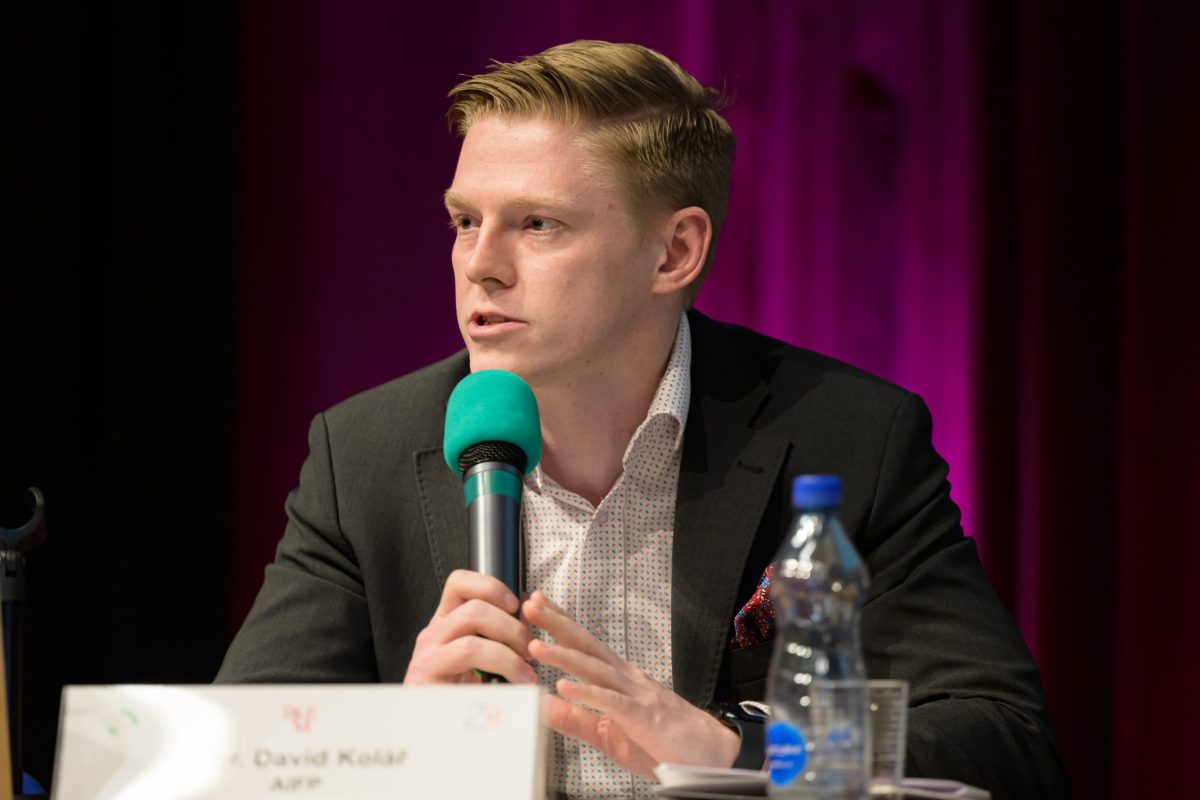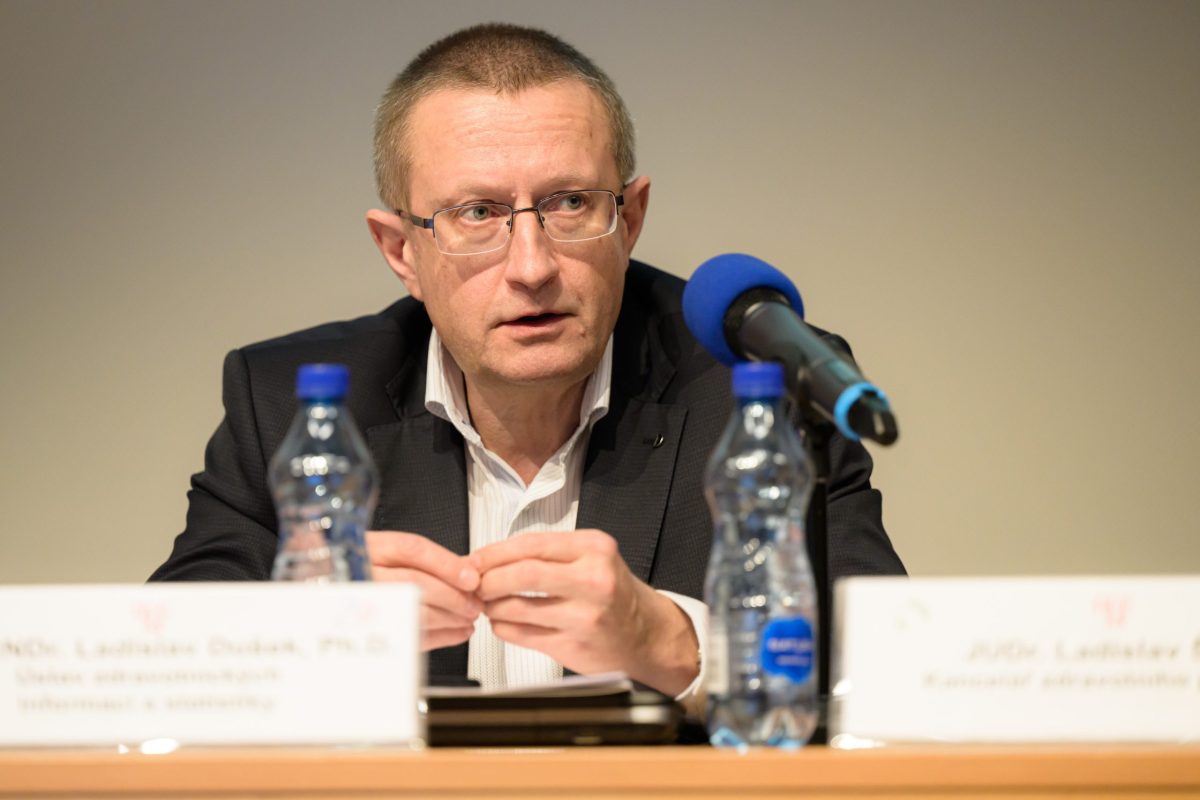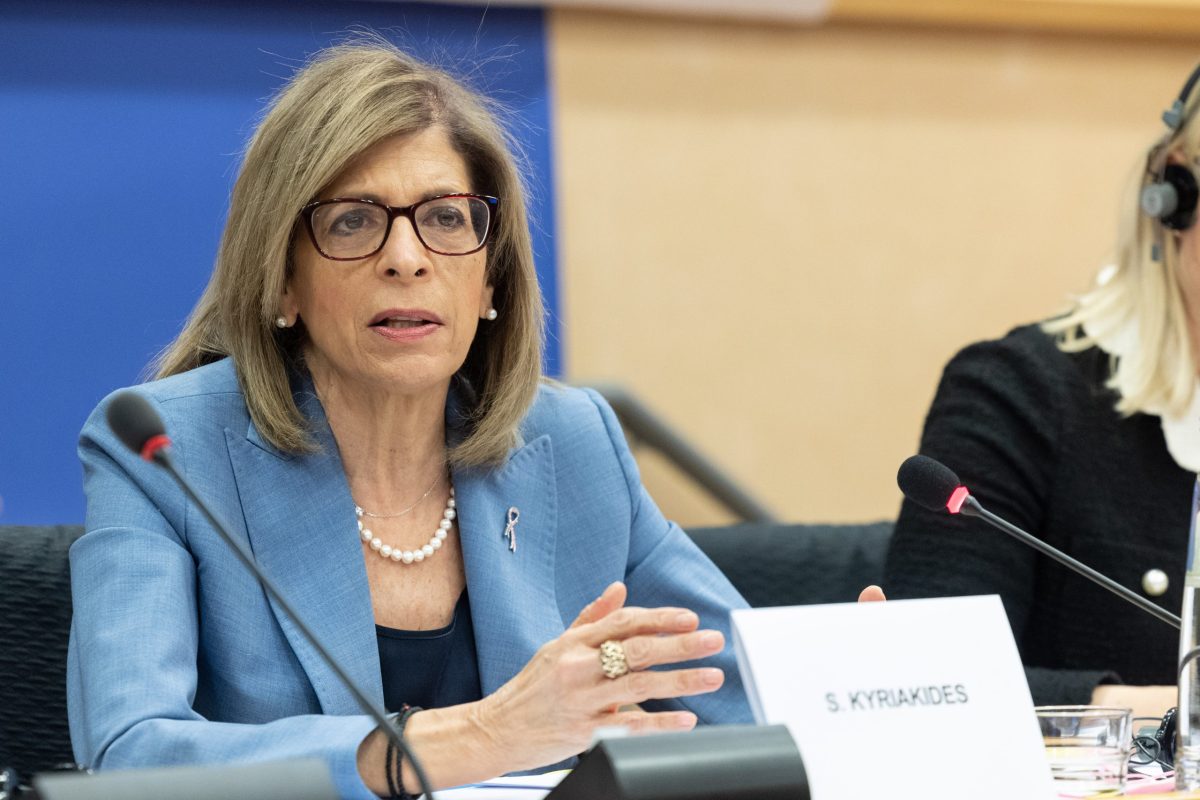The European Commission is currently working on the review of two significant pieces of medicinal legislation. Both regulations on medicinal products for rare diseases and for paediatric use offer a system of rewards and incentives, the aim of which is to support research and development in these fields. Yet, incentivizing may not be enough, a huge obstacle is science itself, says the European Federation of Pharmaceutical Industries and Associations (EFPIA) Director General Nathalie Moll, a graduated biochemist herself, who has been in contact with science for all her professional life. In spite of that, she continues, neither public authorities, nor the industry should stop in their effort to search for new ways to effectively support innovation where it is missing and get the medicine to the patients in need.
At the October Czech Presidency conference on rare diseases in Prague, you said that as regards the development of orphan medicinal products, incentivizing may not be enough, a huge obstacle is science. Why, what is the difference in comparison with other medicinal products?
Innovation in extremely rare diseases is thwarted by enormous scientific challenges. For most of these diseases, fundamental research is effectively non-existent and animal and cellular models, which are essential to medicine development, are rarely available.
Additionally, there may be no experts or research organisations focused on the disease. As a result, the pathophysiology of disease is seldom known. Even when the disease’s underlying root cause is understood, viable drug targets are rarely identified. Without solid basic research to build on, translational research cannot be conducted, and industry is unable to identify promising medicines for development. Beyond pre-clinical research, scientific challenges manifest themselves during clinical development. It is challenging to design and recruit clinical trials when patients are so few. Conducting an adequately powered trial might be statistically impossible. It may require enrolling most of the diagnosed patient population, thereby limiting potential commercial opportunity. The lack of diagnostic capabilities and treatment networks hamper patient identification and enrolment. Moreover, the absence of patient organisations hinders formal patient involvement in the trial design.
Public-private partnership needs to be scaled up
What needs to be done then?
95% of the 6,000-7,000 identified rare diseases don’t have an approved therapy. For most of these diseases, research is non-existent so the search for new treatments is an enormous scientific challenge, as I said. At the current pace, it would take over 100 years to develop treatments for all rare conditions. We need two things: boost innovation and improve access to medicines that make it to market.
Mohlo by vás zajímat
In order to accelerate research, EFPIA and Eurordis have called for a Moonshot approach. The Moonshot for rare diseases aims to scale up public-private partnerships to accelerate research. We are currently working with a range of partners to identify areas where we can work together to make a difference for patients.
To improve access to medicines, EFPIA have developed a five-point proposal. We committed to file pricing and reimbursement applications in all EU countries as quickly as possible and no later than two years after EU market authorisation. We created a European Access Portal that will increase the transparency around market launches of new innovative medicines across countries, and help identify and address the root causes of access delays. We developed a conceptual framework for Equity-Based Tiered Pricing, to ensure that innovative medicines are priced according to countries‘ ability to pay. We are convinced that novel payment & pricing models can accelerate access by allowing payers to manage clinical uncertainty, budget impact and sustainability while incentivising innovation. Last but not least, industry will contribute to achieving an efficient system of European assessments of relative efficacy at time of launch in the context of the implementation of the Health Technology Assessment (HTA) Regulation.
What of it can be addressed in the upcoming revision of EU Regulation on Orphan Medicinal Products (OMP)?
The regulation was introduced in 2000 primarily to address the challenges that were holding back innovation in rare diseases. At that time, there were just eight treatments approved for the more than 6,000 known rare diseases. The main problem was a lack of investment in R&D due to scientific hurdles and market failures.
As the OMP legislation illustrated, intellectual property has a vital role in attracting sustained investment in rare diseases research. That is why we must protect existing incentives for orphan medicines and build on their success.
Reducing the period of market exclusivity, narrowing development incentives, promoting faster generic competition and capping the aggregate number of patients that can benefit from a designated orphan product, is likely to drive research investment away from meeting the needs of patients and weaken a sector at the very heart of EU competitiveness.
Instead, we need to maintain broad incentives to facilitate multiple avenues of research, consider additional, targeted incentives for certain treatments and identify and resolve the multi-factorial barriers to access.
At the Czech Presidency conference, the Director of Eurordis Yann Le Cam presented a proposal on product pricing based on both value and costs, saying that it is difficult to have a debate on value-based pricing without some information on the cost (of the development, launch, commercialization, post-marketing research, etc. of the product). According to him, it would better reflect the reality of investment and lower R&D costs for OMP. It is an “issue of trust”, he said. Is the industry ready to discuss such a proposal?
It is extremely difficult to disentangle costs of R&D from the price of a specific product. Developing a new medicine is a complex process. Many avenues of research do not lead to individual medicines but the learnings from that research are transferred to other therapy areas. In this context, trying to calculate development costs of an individual medicine and trying to apply a pre-defined profit margin simply does not work.
Length of market exclusivity can be modulated
As regards OMP market exclusivity, Olga Solomon from DG SANTE mentioned that the Commission wants to reflect on it in a way that rewards more innovation which is really needed and is not only driven by market considerations. She suggested granting different ranges of market exclusivity depending on the type of product developed and the level of innovation. EFPIA has already presented a similar proposal. Could you describe it in more detail?
First, let me reiterate that existing incentives remain essential, as the economic case for investment in rare diseases is only marginal. Nonetheless, there may be potential to refine the orphan incentive system to encourage further investment in certain underserved areas where research and development is especially challenging. Therefore, EFPIA supports a simple and predictable system of orphan incentives with current ten years of market exclusivity as a baseline, and modulation up or down based on a set of clear and predictable criteria that takes into account the specific challenges related to a given type of development.
Thus, EFPIA suggests additional two-year market exclusivity for first-in-condition products or products addressing diseases with a very low prevalence (<0.5/10000). In these underserved areas, a basic scientific understanding of the condition is often missing and the challenges of conducting clinical trials in small populations are exacerbated.
On the other hand, the duration of market exclusivity could be reduced for follow-on orphan indications of approved substances and for repurposed and well-established use products, as there will already be existing knowledge and data about the products, albeit in other uses. All medicines would continue to be eligible for 2-year extensions upon PIP (Paediatric Investigation Plan) completion. Overall, orphan market exclusivity would last 7 years at a minimum and 12 years at a maximum (14 years with a paediatric reward).)
Have you received any feedback on your proposal so far?
We are discussing our proposal with stakeholders as this is needed to enhance understanding and create the opportunity to learn from each other.
You mentioned that research needs to be more promoted also in paediatrics. Why and how?
In the years since the introduction of the Peadiatric Regulation, more than 290 new paediatric medicines and indications for children have been approved in the EU. Paediatric medicine development is now an integral part of the overall development of medicines, and the proportion of clinical trials that include children increased by 50% between 2007 and 2016. It is important to recognise progress when we see it: children across Europe have benefited from a European policy and law designed to accelerate the development of paediatric medicines. Policymakers and stakeholders identified a pressing problem, designed a solution – and it has borne fruit.
The upcoming review of this Regulation provides an opportunity to evolve from an ‘adult-centric’ approach to a ‘child-centric’ approach.
What are your proposals?
EFPIA is proposing a framework for the „MoA PIP“ (Mechanism of Action Paediatric Investigation Plan), based not on the adult indication, but on a paediatric unmet medical need. In other words, the PIP will be designed having in mind how the product works (its mechanism of action) and what unmet need in children it might be able to address. This would mean that a medicine developed for an adult disease may also be studied in a different childhood disease because both diseases have the same cause, and the treatment may work for both. This child-centric PIP approach would require significant efforts and present new scientific challenges. It will be critical to ensure that it is based on robust science and is framed in a way that ensures that such child-centric PIPs are scientifically and clinically meaningful, doable, and do not place undue burden on innovation.
Thanks to advances in science, we are now able to understand the pivotal causes of many diseases. This is a game changer to discovering new treatments: many medicines are now developed to target the cause of a given disease. The mechanism of action of such a medicine can make it suitable for use in more than one condition if each condition can be shown to be associated to the same pivotal cause. We therefore propose to adjust how a disease (or a condition) is defined, to include the cause of the disease, where this link is scientifically proven based on the most up to date evidence.
86 new products in the European Access Portal
What is the state-of-play of the European Access Portal? Recently, you mentioned that the companies have started filling the information in.
As I already mentioned, EFPIA member companies commit to file for pricing and reimbursement in all EU countries as soon as possible and no later than two years from the central EU market authorisation, provided that local systems allow it. The commitment is designed to help deliver faster, more equitable access to medicines for patients across Europe, and is supported by the launch of this online portal where marketing authorisation holders can provide timely information regarding the timing and processing of their pricing and reimbursement applications in the EU-27 countries. Bringing greater transparency to the barriers and delays to access will facilitate finding solutions in partnership.
The portal was formally launched on 11th April. The first data collection cycle started on 11 April and ended on 5 June. Marketing Authorisation Holders having centrally approved products in 2021 were asked to fill in data. A total of 48 products (including seven biosimilars) from 42 companies were included during this first data collection cycle.
On 11 October the second data collection cycle started and Marketing Authorisation Holders having centrally approved products in 2021 and in the first six months of 2022 were asked to fill information in the Portal (38 new products, including three biosimilars) from 28 companies were added). The second data collection cycle will end on 5 December.
A total of 86 products are currently included in the Portal scope. Marketing Authorisation Holders are asked to update/ check/ validate/ complete the information regarding products already filled in during the first data collection cycle and to fill in the data for the new products included in the Portal scope.
Of the total of 86 products included in the Portal, 42 products belong to EFPIA member companies. The response rate among EFPIA member companies is about 50 percent and is expected to increase (need for companies to set up internal processes to centralize and report the data).
When first reports on the findings will be prepared, and will they be made public? If not, who will receive the reports?
The 1st interim report for contributing manufacturers is delayed due to awaiting the Appropriate Use Governance Board creation. The 1st public report remains scheduled for April 2023.
Helena Sedláčková
Nathalie Moll, joined the European Federation of Pharmaceutical Industries and Associations as Director General in April 2017 after working for 21 years in the biotech industry at the EU and national levels. Nathalie founded European Biotech Week in 2013 and won the Technovisionaries Women Innovation Award organised by Women & Technologies® that same year. Nathalie holds an Honours Degree in Biochemistry and Biotechnology from St Andrews University, Scotland.







